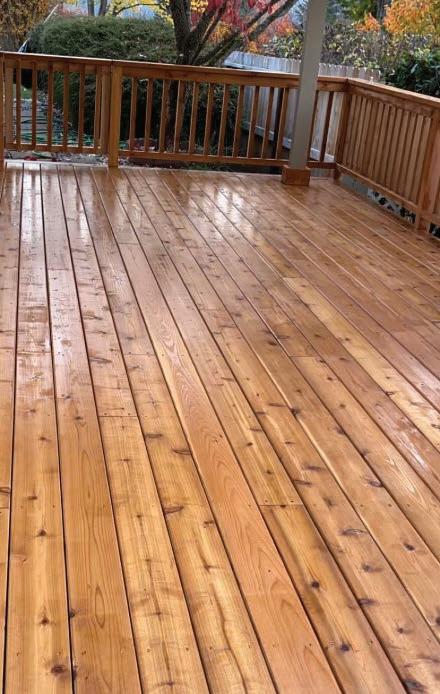
WEDNESDAY, NOVEMBER 19, 2025


WEDNESDAY, NOVEMBER 19, 2025
By John Oliver
The annual holiday card tradition has returned to Grants Pass School District 7, and with it comes an opportunity for the entire community to help select this year’s standout student artwork. Now in its sixth year, the districtwide contest showcases the creativity of students from kindergarten through high school, offering a seasonal glimpse into how young artists interpret winter themes through their own imagination and style.
Students from all grade levels participated, submitting designs created with pencil, paint, marker and a variety of other mediums. The district encouraged entries that reflect “the spirit and beauty of the season,” giving students wide artistic freedom to explore winter landscapes, festive colors, and symbols that capture the meaning of the holidays. The result is a collection of vibrant, diverse artwork representing the artistic development of students at different stages of their education.
A total of 24 designs were selected as finalists, divided into categories for grades K through 1, 2 through 3, 4 through 5, 6 through 8 and 9 through 12. In addition to grade-level recognition, students are also competing for the People’s Choice Award, which spans two broader categories: K through 5 and 6 through 12. While most winners are determined by a district-level judging panel, the People’s Choice Award is fully decided by public vote, giving residents the chance to participate directly in celebrating student achievement.
The district’s judging panel includes members of the Board of Education, Superintendent, printshop designers and additional district staff. Their selections determine which designs best represent the excellence and creativity the district aims to highlight. At the same time, the


People’s Choice vote reflects broader community tastes and supports the bond between the district and the families it serves. The combination of official and public input ensures that the winning cards reflect both artistic merit and community enthusiasm.
Voting is currently open to anyone who wants to take part. Community members, parents, students and supporters can cast their vote for their favorite card design through November 30, 2025. The district emphasizes that the process is open to all, reinforcing the idea that the holiday card contest is not only a student event but a community tradition that invites widespread participation.
Winners will be announced on Monday, December 1. Once the selections are finalized, the district will offer variety packs featuring the winning cards for a limited purchase window. These packs have become popular among residents who enjoy sending locally inspired cards or collecting a piece of annual student creativity. Additional details about ordering will be available on the district’s website on December 1.
The holiday card contest has grown into a highlight of the winter season for Grants Pass School District 7. What began as a simple way

to incorporate student artwork into district communications has evolved into an annual celebration of youth talent, creativity and community involvement. The contest encourages students to explore artistic skills, celebrates the value of arts education and continues to build a tradition that many local families look forward to each year.
As the calendar approaches the holidays, this year’s contest once again demonstrates how art can unite a community. Whether a design features snowy scenes, festive patterns or imaginative interpretations of winter, each card carries a student’s unique expression and a reminder of the joy and creativity that define the season. With voting underway, residents have a chance to support local students, participate in a cherished community activity and help determine which young artists will represent the district in the coming year’s holiday greetings.
Trump Pushes for Two Thousand Dollar Payments Next Year
By John Oliver
President Donald Trump’s renewed push for a national tariff dividend has moved from a campaign talking point into a developing policy discussion, with the president repeatedly suggesting that most Americans could receive two-thousand-dollar payments as early as next year. The proposal, which Trump frames as a way to return tariff revenue to middle and moderate income households, is attracting widespread attention while raising questions about feasibility, legality and the administration’s ability to meet the promised timeline.
In recent public remarks, Trump described the plan as a dividend funded by tariff collections, asserting that tariff revenue has accumulated to

levels sufficient to support direct payments while also contributing to debt reduction. He indicated that the first wave of payments would likely arrive sometime in the middle of next year, though other comments placed the timeline slightly beyond that point. The idea has quickly become one of the most high profile elements of his domestic eco-
nomic agenda, appealing to many voters who have continued to feel the strain of inflation and rising living costs.
Inside the administration, the concept is being described as a work in progress rather than a finalized program. Treasury Secretary Scott Bessent has emphasized that any form of tariff dividend would
require approval from Congress, which means the proposal cannot move forward through executive authority alone. Officials have also acknowledged that the structure of the dividend remains unresolved. It could take the form of a traditional payment, but the administration has also floated alternatives such as tax changes benefiting hourly workers, tip earners or Social Security recipients. These variations reflect both the uncertainty surrounding available tariff revenue and the potential political challenges of securing legislative support for a large new outlay.
• see PUSH, page 5

City of Grants Pass
A section of West Harbeck Road in Grants Pass will be temporarily closed on Thursday, November 20, as city crews carry out scheduled asphalt paving and repair work. The closure will run from 8 a.m. to 3 p.m. and will affect the stretch between Brittany Court and Allen Creek Road, limiting all through traffic for the duration of the project.
The planned work is part of the city’s ongoing roadway maintenance program aimed at improving driving conditions and extending the life of local streets ahead of the winter season. The City of Grants Pass has stated that the project requires a full closure due to equipment, safety needs and the scope of the asphalt repair.
Residents who live within the affected area will still be able to reach their homes. Local access will remain open from either side of the closure, though drivers should expect crews and machinery in the work zone and may
encounter brief delays.
Unlike larger projects that require rerouting, this closure will not include any designated detours. Motorists traveling through the neighborhood or using West Harbeck as a connector road are being urged to plan ahead and seek alternate routes to avoid congestion and delays. With no detours established, the city recommends adjusting travel schedules as needed.
Emergency vehicles will not be permitted to pass through the closed section during the work period. Response agencies have been notified in advance to ensure alternative routing is available.
The City of Grants Pass is encouraging anyone with questions about the closure or the project to contact its offices at 541-450-6110. The work is expected to be completed within the scheduled timeframe, allowing normal traffic flow to resume by late afternoon.
























By Ellen Ward
The international response to the United Nations Security Council’s approval of the United States’ Gaza peace framework has set the stage for one of the most consequential diplomatic experiments in the region in years. The resolution, built around a 20-point plan advanced by President Donald Trump, received overwhelming support from council members and immediately reshaped conversations about ceasefire arrangements, governance in Gaza and the long-discussed question of Palestinian statehood.
At the center of the plan is an internationally backed transition period designed to end the cycle of war between Israel and Hamas while creating a temporary system to manage Gaza’s recovery. The framework authorizes an International Stabilization Force with responsibilities that include securing border areas, protecting humanitarian operations and overseeing the removal of weapons that remain scattered across the territory following months of conflict. The same resolution calls for the establishment of an interim administrative body known as the Board of Peace, which is expected to assume civil governance duties and direct reconstruction efforts.
The deal introduces a conditional reference to a potential future Palestinian state. Although no binding commitment to statehood exists within the text, the resolution outlines a process in which political and institutional reforms would be required before statehood could be formally considered.

The inclusion of this language has generated mixed reactions from regional governments.
Supporters argue that it provides a structured political horizon, while critics contend that the requirements make meaningful progress toward statehood uncertain.
The Palestinian Authority signaled openness to participating in the new governance structure and working within the framework. Hamas rejected the plan outright, citing opposition to international oversight and refusing the requirement of disarmament. Israel’s government has been divided, with some officials concerned about provisions that could limit Israeli control over border security and others cautious about language referencing future Palestinian sovereignty. These competing positions illustrate the difficulty of imple-
From page 1
Analysts have noted that the numbers involved are substantial. A two thousand dollar payment directed at every adult under a six figure income threshold could easily cost hundreds of billions of dollars, a sum significantly higher than current annual tariff revenue. That gap raises questions about whether the dividend could be fully financed without additional revenue sources or significant cuts elsewhere in the federal budget. It also places pressure on the administration to clarify whether the plan is intended as a one time rebate or a recurring benefit.
Several economists have expressed concern that a large scale cash distribution at a time of continued pressure on consumer prices could renew inflationary momentum. They argue that even a one time payment could add to demand in sectors already struggling with supply constraints. Supporters counter that the payment would serve as a temporary buffer for families contending with elevated food, housing and energy costs, though those arguments remain contested. Legal scholars have also pointed to potential complications tied to Trump’s tariff strategy itself. Some of the new tariffs rely on authorities that have previously drawn judicial scrutiny, and any court challenge could
menting a multi-stage agreement in a region marked by deep mistrust and competing national interests.
International reaction beyond the region has been varied but largely supportive of the ceasefire and stabilization components. Many nations have emphasized the urgency of halting hostilities to allow immediate humanitarian access and long-term reconstruction. The success of the plan, however, depends heavily on commitments from countries willing to contribute personnel and financial resources to the stabilization force and the rebuilding of Gaza’s devastated infrastructure. Several governments have expressed interest but have yet to outline the scope of their participation.
Concerns remain about how the plan
affect the availability of the revenue Trump intends to use for the dividend. Beyond the legal landscape, the biggest obstacle may ultimately be Congress. While some lawmakers have expressed interest in exploring the idea, others have raised concerns about cost, deficit effects and the fairness of distributing tariff revenue to specific income segments.
Despite these hurdles, the proposal has gained traction among portions of the public, in part because of its simplicity. A direct payment delivers a clear message and provides a tangible benefit, particularly for households left frustrated by rising prices. The administration appears to recognize that appeal, repeatedly reaffirming Trump’s commitment even as the details remain fluid.
For now, the tariff dividend remains more aspiration than policy. The administration continues to promote the concept, but the underlying questions have not yet been answered. Whether mid twenty-six remains a realistic target will depend on the pace of legislative negotiations, the stability of tariff revenue and the administration’s ability to design a program that pairs political momentum with economic practicality.
will be enforced, who will ultimately control Gaza’s borders and how reconstruction will unfold in an area where large portions of residential and commercial districts have been reduced to rubble. The logistics of clearing unexploded ordnance, repairing utilities and restoring medical and educational services present challenges that will persist for years. Diplomatic analysts are watching closely to see how quickly stabilization forces deploy and whether the Board of Peace can operate effectively amid the political fragmentation on the ground.
The coming weeks are expected to shape the trajectory of the plan. National governments must decide whether to provide troops, funding or administrative support. Israel will face pressure domestically and internationally as it weighs security concerns against obligations outlined in the resolution. Palestinian factions must determine whether cooperation or resistance will define their response to the new governance structure. Meanwhile, humanitarian organizations are preparing for an influx of aid should conditions on the ground permit broad access.
The Security Council’s endorsement gives the plan international legitimacy, but its longterm viability will hinge on coordination, trust and sustained global attention. Whether this initiative marks a path toward stability or becomes another stalled effort will depend on decisions made in the coming months as the region confronts its most complex crossroads in years.






By John Oliver
When counties slash budgets, the impact is rarely abstract. It shows up in the moments when residents reach out for help and find no one on the other end. That pattern is becoming increasingly familiar in Josephine County, where sweeping cuts, layoffs and buyouts have removed entire layers of public service. Code enforcement, once a basic function of local government, has been reduced to a voicemail recording informing callers that no one remains to process their complaints. What was once an essential public safety role has been erased, leaving residents to navigate problems on their own while inexperienced managers in other departments struggle to absorb the pressure.
A recent incident involving construction activity at the Grants Pass Airport illustrates the ripple effects of this vacuum. Residents living near the airport reported construction trucks moving in and out of the property well after midnight on a Sunday. The noise, lights and disturbance were significant enough that some sought help, eventually venting their frustration at a local recall signature booth, where they described the late-night traffic and the inability to get any response from the county. When one resident attempted to report the issue, they were met with the blunt reality that the county no longer has a functioning code enforcement office. With no officers to log complaints or investigate violations, the call led nowhere.
Their next step was to contact the airport

manager directly, hoping for some explanation or assistance. According to the account relayed by residents at the booth, they instead encountered a dismissive and rude response. The exchange left them even more frustrated, underscoring a larger concern that without code enforcement or administrative oversight, departments are increasingly left to police themselves. The imbalance of power becomes stark when residents are left with no avenue for accountability and managers face no pressure to respond professionally or promptly.
This single complaint reflects a larger structural failure. The county’s decision to eliminate code enforcement has not only removed a critical safeguard but has also shifted the burden onto departments already strug-
gling with internal instability. Budget cuts have placed inexperienced supervisors in roles that typically require knowledge of complex regulations and the ability to mediate between public concerns and county operations. These managers must now operate without support, oversight or institutional guidance. The consequences are visible in inconsistent practices, diminished responsiveness and a growing sense among residents that their concerns simply do not matter.
The situation at the airport is a symptom of this broader breakdown. Late-night truck activity, whether tied to construction, maintenance or contracted services, would normally be reviewed by code enforcement for compliance with county ordinances. Noise concerns,
Every so often a single word reemerges from the deep well of the English language and reminds us why our vocabulary is worth preserving. It happened to me this week when an email from a retired attorney used a word I had not seen in years. It landed with the same weight and clarity it carried the first time I heard it, back when voices like Dennis Miller peppered their commentaries with unexpected linguistic gems. The word was plight, a simple but commanding term that captures struggle in its purest form. It speaks of a difficult or unfortunate situation, the kind of hardship that shapes a person or a community. It is a word with backbone, a word that carries the quiet dignity of survival.
There are many words like this tucked into the corners of our language. They are not archaic. They are not antique curiosities. They are simply underused. They wait patiently until a thoughtful writer or speaker retrieves them, dusts them off and sets them into motion again. For journalists these words exist like tools in a well worn drawer. We may not reach for them every day, but we know their weight and purpose. When the moment is right, they sharpen our meaning with an accuracy that the

more common choices cannot rival.
Consider the word dolt, another example of a term that once appeared with regularity in essays, books and commentary. It describes someone acting foolishly or without sense. While the word is far from gentle, it is so rarely heard today that its reappearance can feel almost refreshing in its candor. It makes its point without vulgarity or excess. It conveys exasperation without resorting to the crude language that has become so common in public
discourse. In a time when communication moves fast and attention spans move even faster, these quieter, sharper words have the power to slow the reader down and remind them of the richness of the language they carry.
The English language is packed with such treasures. Some have fallen out of fashion. Others are simply overshadowed by modern expressions that trade efficiency for depth. Yet when these forgotten words are pulled into the present they
operational hours and neighborhood impacts would be evaluated, recorded and addressed through established procedures. Instead, those procedures no longer exist, leaving the public without recourse and departments without guardrails.
The instability compounds as residents discover that the county has little capacity to intervene when conflicts arise. Long-standing community standards become difficult to enforce. Neighborhood disputes escalate. Industrial or commercial activities proceed unchecked. And when county leadership offers little accountability or direction, each department becomes an island operating under its own interpretation of what rules remain.
As Josephine County continues to operate under these reduced structures, the challenges only grow. Budget decisions that once seemed like cost-saving measures now reveal themselves as foundational weaknesses that continue to erode the public’s trust. The frustration voiced by the residents near the airport is not an isolated incident but a signal of a system that no longer supports the people it is meant to serve.
Until code enforcement or an equivalent oversight mechanism is restored, the county will continue to see rising tensions, frayed relationships with the public and an operational climate defined by avoidable confrontations. The late-night disturbance at the airport is only one example of how quickly things unravel when essential services disappear.
add texture to the stories we tell. They give shape to emotion and circumstance with a precision that broad terms cannot deliver. They stand as reminders that language, when used thoughtfully, can elevate understanding rather than dilute it.
When a reader encounters one of these underused words it can do more than define a moment. It can spark curiosity. It can send someone searching for meaning, for history, for context. It can reconnect us to a time when vocabulary was not merely functional but expressive, when writers chose their words not only to communicate but to resonate. That resonance matters. It is part of what makes journalism an art as well as a craft.
So, when a word like plight appears unexpectedly in an email, it is worth pausing to appreciate the small moment it creates. It is a reminder that clarity, depth and precision still have a place in our crowded language. It is a reminder that our words, even the ones we seldom use, have power. And it is a reminder that for those of us who work with language every day, these quiet giants of vocabulary are still waiting, ready to bring meaning into sharp focus when we choose to reach for them again.

Advertise with The Grants Pass Tribune!
Show
By John Oliver
Yachats is preparing to usher in the holiday season with the return of its Winter Festival, a two-day community celebration that blends coastal charm, local craftsmanship and festive traditions. Scheduled for December 6 and 7, the event invites residents and visitors to enjoy a weekend centered on creativity, small business support and classic winter activities that highlight the character of this coastal town.
The festival is organized by the Yachats Area Chamber of Commerce and is expected to draw families, artisans and holiday shoppers from across the region. The Yachats Commons on Highway 101 will serve as the heart of the festivities, with the Holiday Vendor Fair filling the building and surrounding grounds throughout the weekend. Dozens of makers and small businesses will showcase handcrafted gifts, seasonal décor, art pieces, specialty foods and other items that reflect the individuality of the Oregon coast. The fair will be open from late morning through midafternoon both days, giving shoppers ample time to browse and explore.
Beyond the market, the weekend includes activities designed to offer a relaxed, family-oriented holiday experience. One of the more anticipated features of the festival is the Hot Cocoa Trail scheduled for Saturday afternoon. Participating cafés and shops will offer a variety of cocoa-themed drinks and treats, turning downtown Yachats into a self-guided tasting route. Visitors can pick up maps at the Commons and stroll through town while sampling seasonal flavors and discovering local businesses.
As daylight fades on Saturday, the community will gather for the annual

Tree Lighting Celebration, a long-standing tradition that signals the beginning of the Yachats holiday season. The town tree will be illuminated shortly after dusk, bringing residents and visitors together in a shared moment that has become a signature part of winter on the central Oregon coast. The ceremony often attracts both locals and travelers who make the trip specifically for the atmosphere and the chance to experience Yachats in a more peaceful seasonal setting.
Throughout the weekend, additional activities will be offered to encourage participation from families and visitors of all ages. Wreath-making workshops and hands-on craft projects will be available in various locations, allowing attendees to create their own seasonal decorations. These activities have become popular in recent years as they provide a relaxed complement to the busy shopping environment and give younger visitors a chance to engage in the festivities.
Local economic support remains a central theme of the Winter Festival. Shoppers who visit the vendor fair will be able to receive a coupon valid for a discount at participating Yachats businesses throughout December. The incentive is aimed at keeping holiday spending within the community and boosting small businesses during one of the most important retail periods of the year.
The Winter Festival has grown into both a holiday tradition and a showcase of Yachats’ creative talent, coastal spirit and welcoming atmosphere. With its mix of local artisans, seasonal activities and community engagement, the event offers a holiday experience that emphasizes connection and the unique character of this coastal town. As December approaches, Yachats prepares once again to open its doors and celebrate the season with warmth, light and the enduring charm that has made the Winter Festival a regional favorite.
City of Grants Pass
Downtown Grants Pass welcomed the return of its familiar winter glow this week as holiday snowflake decorations were installed along city streets in the early hours of the morning. The seasonal display, a long-standing tradition that signals the start of the community’s festive period, was made possible through the efforts of three Pacific Power crews who began their work at 3 a.m. to ensure the lights were up before traffic and local activity picked up for the day.
The illuminated snowflakes have become a recognizable part of Grants Pass during the winter months, offering a sense of warmth and nostalgia as residents prepare for the holiday season. Their installation each year marks a visual shift in the downtown corridor, transforming the area into a brighter and more inviting space for shoppers, visitors and families who enjoy the atmosphere of the season. The work requires careful coordination, particularly as

crews navigate overhead lines, traffic patterns and weather conditions to place the decorations securely and efficiently.
Pacific Power’s involvement is not new. The company has assisted with the installation for many years, contributing staffing, equipment and technical expertise to help the city maintain the annual tradition. Their crews work quickly and quietly during off-hours to minimize
5 DAY OUTLOOK
SOURCE: WEATHER.COM






help create a welcoming environment for residents and tourists, many of whom view the illuminated designs as part of the city’s seasonal identity. Business owners often note that the festive lighting contributes to the overall experience of visiting downtown, encouraging people to linger, explore shops and participate in community gatherings.
disruption and to make sure the decorations are fully lit by the start of the day. This year was no exception as workers moved methodically through downtown before sunrise to complete the task.
The return of the snowflakes arrives at a time when local businesses are preparing for increased foot traffic associated with holiday shopping and winter events. The decorations
City officials and community members regularly express appreciation for the continued partnership that allows this tradition to continue each year. While the decorations themselves are temporary, they represent a larger effort to build community spirit and encourage local engagement during the colder months.
A photo gallery of the installation and completed display is available for residents who want a closer look at the work completed before dawn and the seasonal transformation that now brightens the city’s streets.
By John Oliver
For decades New Balance occupied a near legendary place in the wardrobes of runners and gym goers across Oregon. The brand’s reputation for durability, support and dependable construction made it a trusted companion for everything from weekend jogs along the Rogue River to long training sessions on local gym floors. Many athletes stayed with the company for years because its shoes held up under the predictable torture of daily use. That sense of reliability, however, has begun to erode for some longtime customers who are now seeing problems that were once unthinkable from the brand they relied on.
The most frequent concern comes from the soles of recently manufactured New Balance models. Runners have reported that the soles of certain shoes separate from the body of the shoe far earlier than expected. What used to require heavy miles and years of wear now seems to occur within months for some pairs. This failing adhesive or weakened bond between sole and upper has disappointed seasoned runners who expect more from a brand built on the promise of durability. Attempts to reach customer service have been equally frustrating for some who have waited on hold for hours without receiving meaningful help or explanation.
These experiences stand in contrast to what many runners have discovered after switching to On Cloud, a Swiss brand that rose to prominence in the last decade. On Cloud entered the market with a distinctive design focused on responsive cushioning and structured stability. While the price is undeniably higher than many mainstream running shoes, users point to consistent quality as justification for the investment. The soles remain firmly intact

even under heavy mileage, the arches hold their shape and the material retains its support over time. For runners who depend on their footwear to endure repeated impacts, these qualities matter more than sleek styling or trend driven branding.
The difference between the two companies becomes more pronounced when comparing long term performance. New Balance once boasted a reputation for longevity that seemed unshakable. In recent years, however, the decline in reliability for some models has created a gap in trust that is not easily repaired. On Cloud has moved into that gap with a product that appears engineered for athletes who

expect consistency at every step. The shoes handle pavement, gravel and treadmill use without the early breakdowns that have frustrated some New Balance loyalists.
In Southern Oregon, where outdoor fitness is woven into everyday life footwear is more than an accessory. It is a tool that must withstand rain-soaked sidewalks, Rogue Valley heat and uneven rural terrain. When a shoe fails prematurely it interrupts routines and erodes confidence. For individuals who have tested both brands repeatedly the conclusion has become clear. On Cloud is currently delivering the durability and responsiveness
that runners once took for granted in New Balance. Though New Balance still offers a wide range of models and continues to innovate, the recent dip in quality control raises questions about the brand’s direction.
For runners contemplating a change it may be worth exploring the newer contender on the market. On Cloud has demonstrated that it can handle the demands of regular training without the structural failures reported elsewhere. In a region where every step matters the right shoe can make all the difference and for many that next step is no longer taken in New Balance.
